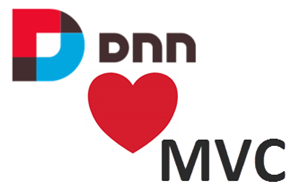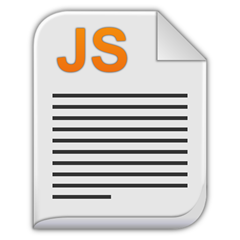Thoughts from the Wet Coast
The musings of an ASP.NET Developer from Canada's We(s)t Coast
Articles
 This blog was originally posted on the DNN Community blog
This blog was originally posted on the DNN Community blog
In addition to ASP.NET MVC modules, DNN 8 will support SPA (Single Page Application) modules, developed purely with HTML JavaScript and Css, together with ASP.NET Web API based Web Services on the Web Server. DNN currently supports this module type – to a degree - but the HTML is required to be in the WebForms User Control. A number of the newer modules have been built this way, for example the Core Messaging module and Membership modules found in the User Profile are built in this way.
This blog was originally posted on the DNN Community blog
 In my previous blog I reviewed the Development Environment I will be using for my blog series on Module Development in DNN 8. As a reminder you can find all the sample code on Github at https://github.com/cnurse/DnnConnect.Demo. In this blog we will create our first MVC Action and View.
In my previous blog I reviewed the Development Environment I will be using for my blog series on Module Development in DNN 8. As a reminder you can find all the sample code on Github at https://github.com/cnurse/DnnConnect.Demo. In this blog we will create our first MVC Action and View.
This blog was originally posted on the DNN Community blog
 A new CTP for DNN 8 was released this week. This CTP contains updated support for building modules using the ASP.NET MVC Framework as well as new support for building HTML 5 based modules. This adds to the existing support for building modules with ASP.NET WebForms (User Controls) and Razor scripts.
A new CTP for DNN 8 was released this week. This CTP contains updated support for building modules using the ASP.NET MVC Framework as well as new support for building HTML 5 based modules. This adds to the existing support for building modules with ASP.NET WebForms (User Controls) and Razor scripts.
JavaScript is actually quite a simple language. It is described as a loosely typed language, which means that unlike C# it doesn’t enforce a strict “typing” model.
In fact, in JavaScript, aside from a few primitive value types, everything is an object. Ok, some of you C# developers are saying – that’s true of C#, everything in C# is considered an object. The difference is that whereas in C# everything is an instance of a class which "derives” from the Object class, everything in JavaScript actually is an object.
 I am a Web Developer – and so you would think that I use JavaScript as a routine part of my job.
I am a Web Developer – and so you would think that I use JavaScript as a routine part of my job.
However, until recently I have been mainly involved writing “server-side” Visual Basic or C# code in the ASP.NET Web Forms model. In that model, when a user clicks a button (or hyperlink) on a web page or makes a selection in a drop-down control this invariably results in a post back to the server which responds to the client-side action, and then completely refreshes the page.
In the previous paragraph I wrote “until recently”, and that is because for the 2 or 3 years, JavaScript has become a significant part of my job.
 One of Reacts strengths is that it is NOT an MVC or MVVM framework. These frameworks can get quite slow when there are a lot of complex updates being made to the underlying models. The frameworks are continuously monitoring for changes and one change to one component can lead to hundreds or thousands of changes to other objects, and the frameworks are continuously updating the DOM to visualize the changes.
One of Reacts strengths is that it is NOT an MVC or MVVM framework. These frameworks can get quite slow when there are a lot of complex updates being made to the underlying models. The frameworks are continuously monitoring for changes and one change to one component can lead to hundreds or thousands of changes to other objects, and the frameworks are continuously updating the DOM to visualize the changes.
 Last summer DNN Corp announced their intention to support MVC in future versions of the eponymous DNN Platform.
Last summer DNN Corp announced their intention to support MVC in future versions of the eponymous DNN Platform.
Last week Joe Brinkman announced that the initial fruits of those labours was now available in a CTP of DNN 7.5. The support introduced in 7.5 will allow developers to build their DNN modules using ASP.NET MVC version 5.1.1 or later.
Today, Scott Guthrie announced the new Microsoft Azure App Service. Azure App Service is a collection of 4 Application types– Web Apps, Mobile Apps, Logic Apps and API Apps.

In my previous blog I introduced React – a new(ish) JavaScript library for building “Web Components”. In this post I will start to dive deeper by building our first React Web Components.
Disclaimer
The opinions expressed herein are my own personal opinions and do not represent my employer's view in anyway.
 This blog was originally posted on the DNN Community blog
This blog was originally posted on the DNN Community blog
 This blog was originally
This blog was originally 
 One of Reacts strengths is that it is NOT an MVC or MVVM framework. These frameworks can get quite slow when there are a lot of complex updates being made to the underlying models. The frameworks are continuously monitoring for changes and one change to one component can lead to hundreds or thousands of changes to other objects, and the frameworks are continuously updating the DOM to visualize the changes.
One of Reacts strengths is that it is NOT an MVC or MVVM framework. These frameworks can get quite slow when there are a lot of complex updates being made to the underlying models. The frameworks are continuously monitoring for changes and one change to one component can lead to hundreds or thousands of changes to other objects, and the frameworks are continuously updating the DOM to visualize the changes.